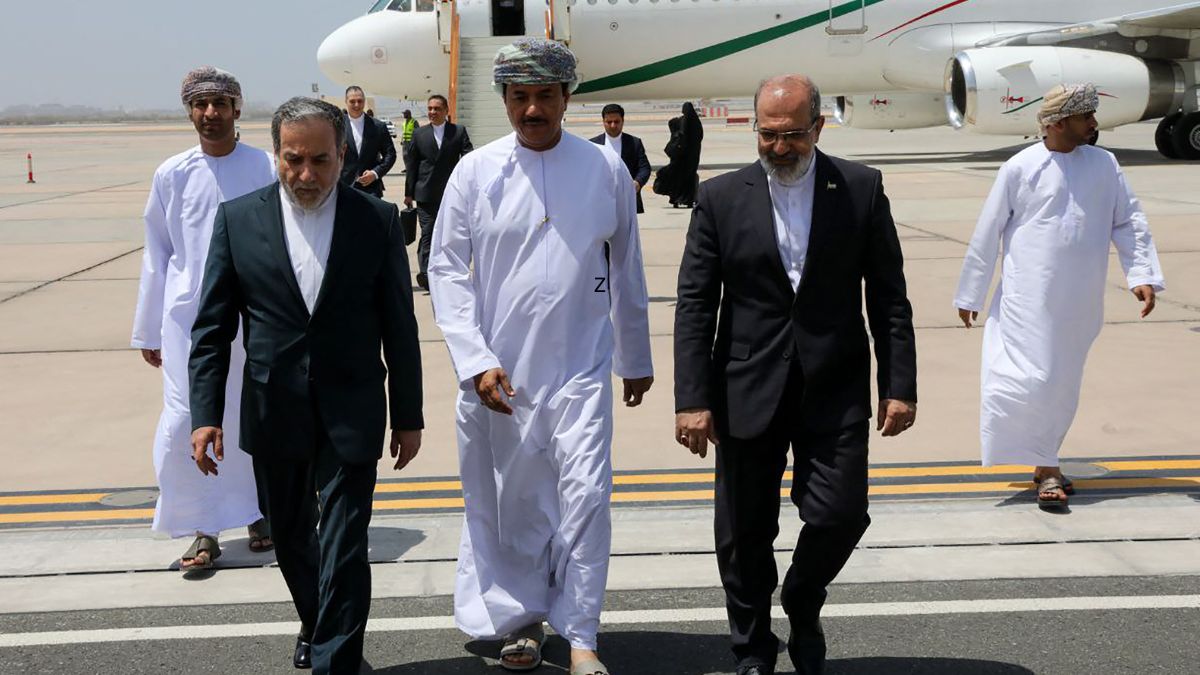Iran said Sunday it had concluded the fourth round of nuclear talks with the United States, describing it as “difficult”.
“The fourth round of indirect Iran-US negotiations is concluded; difficult but useful talks to better understand each other’s positions and to find reasonable and realistic ways to address the differences,” said foreign ministry spokesman Esmaeil Baqaei in a post on X.
The United States and Iran held a three-hour round of negotiations in Muscat, Oman, with both sides confirming the talks took place, though few details were disclosed. The discussions, facilitated by Oman, were described as both indirect and direct by a US official speaking on condition of anonymity.
Iranian Foreign Ministry spokesperson Esmail Baghaei confirmed the meeting and said a decision on the next round of talks is under discussion, though he did not elaborate on the content or outcomes. The talks come amid heightened tensions in the Middle East.
“Agreement was reached to move forward with the talks to continue working through technical elements,” the US official said. “We are encouraged by today’s outcome and look forward to our next meeting, which will happen in the near future.” The talks seek to limit Iran’s nuclear programme in exchange for the lifting of some of the crushing economic sanctions the US has imposed on the Islamic Republic, closing in on half a century of enmity.
Trump has repeatedly threatened to unleash airstrikes targeting Iran’s programme if a deal isn’t reached. Iranian officials increasingly warn that they could pursue a nuclear weapon with their stockpile of uranium enriched to near weapons-grade levels. Meanwhile, Israel has threatened to strike Iran’s nuclear facilities on their own if it feels threatened, further complicating tensions in the Mideast already spiked by the Israel-Hamas war in the Gaza Strip.
Impact Shorts
More ShortsIranian state television announced the talks had begun. There was no immediate comment from the US side.
Iran has insisted that keeping its ability to enrich uranium is a red line for its theocracy. Witkoff also has muddied the issue by first suggesting in a television interview that Iran could enrich uranium at 3.67%, then later saying that all enrichment must stop.
“An enrichment program can never exist in the state of Iran ever again,” Witkoff told the right-wing Breitbart news site in a piece published Friday. “That’s our red line. No enrichment. That means dismantlement, it means no weaponisation, and it means that Natanz, Fordow, and Isfahan — those are their three enrichment facilities — have to be dismantled.” Araghchi, however, warned again that enrichment remains a red line for Iran.
“This is a right of the Iranian people that is not up for negotiation or compromise. Enrichment is one of the achievements and honours of the Iranian nation,” Araghchi said Sunday before leaving Tehran. “A heavy price has been paid for this enrichment. The blood of our nuclear scientists has been shed for it. This is non-negotiable. That has been our clear stance that we have always voiced.” Iran’s 2015 nuclear deal with world powers capped Tehran’s enrichment at 3.67% and reduced its uranium stockpile to 300 kg. That level is enough for nuclear power plants, but far below weapons-grade levels of 90%.
The latest US-Iran talks in Muscat, Oman come amid high regional tensions and deep mistrust, with little sign of an imminent breakthrough. Since the US withdrawal from the 2015 nuclear deal under President Donald Trump in 2018, Iran has enriched uranium to 60% purity, just short of weapons-grade, and tensions have escalated through maritime attacks and regional conflict.
Despite the renewed negotiations, prospects for a deal remain uncertain. A Trump-imposed two-month deadline, reportedly conveyed in a March 5 letter to Iran’s Supreme Leader Ayatollah Ali Khamenei and delivered by an Emirati diplomat on March 12, is fast approaching. Trump is expected to depart Washington on Monday for a Gulf tour that includes Saudi Arabia, Qatar, and the UAE.
Meanwhile, economic pressure and domestic unrest continue to mount in Iran. The rial has strengthened slightly to around 830,000 per US dollar, but the country remains under heavy sanctions. Rumors of fuel subsidy cuts — a past trigger for protests — and ongoing defiance of hijab laws by women in Tehran reflect persistent internal tensions.
The April 26 round of talks coincided with a deadly explosion at Iran’s Shahid Rajaei port, suspected to involve a shipment of missile fuel. Iranian authorities have yet to offer a full explanation, adding another layer of uncertainty to the already fraught negotiations.
With inputs from agencies


)

)
)
)
)
)
)
)
)



